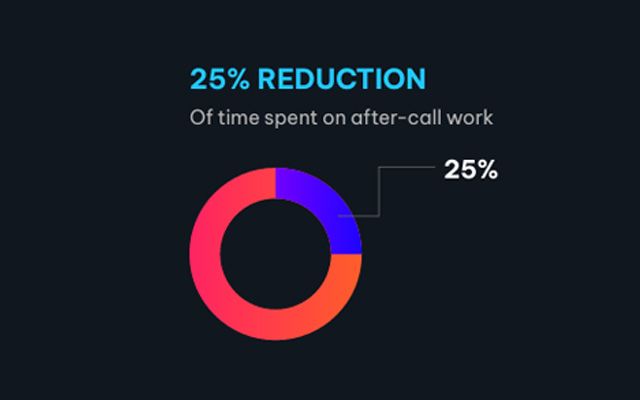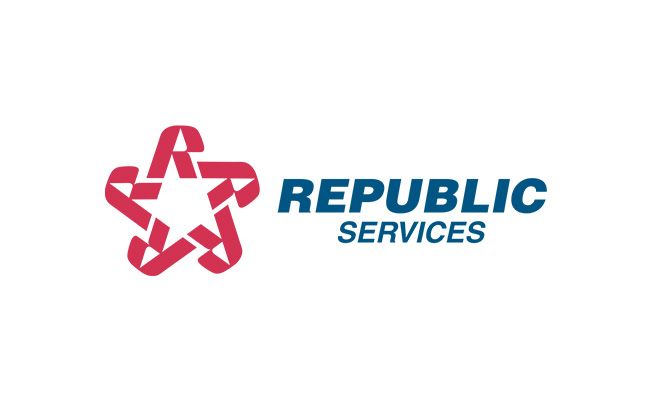CUSTOMER PROFILE
ABOUT
The Toronto-Dominion Bank and its subsidiaries are collectively known as TD Bank Group (TD). TD is the sixth largest bank in North America by assets and serves more than 27 million customers in three key businesses operating in a number of locations in financial centres around the globe: Canadian Retail, including TD Canada Trust, TD Auto Finance Canada, TD Wealth (Canada), TD Direct Investing, and TD Insurance; U.S. Retail, including TD Bank, America’s Most Convenient Bank®, TD Auto Finance U.S., TD Wealth. TD Bank also ranks among the world’s leading online financial services firms, with more than 15 million active online and mobile customers.
INDUSTRY
Financial services
AGENTS
Approximately 8,000 agents actively using the solution
GOALS
- Save money
- Modernize operations
- Gain efficiencies
- Free managers to focus on coaching
FEATURES
- Improve operational efficiency and cost
- Enable staffing agility
- Manage team performance more easily and effectively
- Empower agents to manage their work-life balance
01 THE BEFORE
A rigid scheduling model and a heavy administrative load
TD Bank’s contact centers were serving nearly 10 million customers in the North America. Once forecasts were produced and agents were scheduled, it fell to TD’s command center to manage day-to-day operations. As is the case at many financial services institutions, TD’s scheduling practices and policies for contact center agents were historically fairly structured and rigid. Intraday schedule changes and shift requests were handled through emails between agents and managers—a time-consuming practice that made it hard to meet changing business needs effectively and efficiently.
In addition, incidents or events impacted the command center’s ability to monitor real-time adherence forced command center employees to shift focus to adjusting schedules, including manual approval of overtime as it was offered, to ensure that staffing matched demand. Team managers were also expected to monitor real-time adherence for their respective business—an administrative task that took time away from coaching agents.
02 DESIRE TO CHANGE
Modernizing command center operations
As part of a larger initiative to increase operational efficiency, responsiveness, and accountability across the organization, TD wanted to modernize its command center operations, including enabling greater flexibility for the agents who interact with the customers and are at the center of everything TD does.
The adoption of EEM was at the heart of an initiative TD calls iTime, which was designed to enable contact center agents to independently manage their schedules while improving schedule effectiveness, reducing costs, and increasing efficiency. The bank, which was already using the NICE Workforce Management suite to forecast, schedule, adapt, and respond to changing conditions, evaluated a variety of solutions on the market and chose NICE Employee Engagement Manager (EEM) due to its automation capabilities and ability to give agents greater control over their schedules while ensuring that business needs continued to be met. When the pandemic hit, scheduling flexibility became a business imperative, and TD further invested in the utilization of the solutions.
03 THE SOLUTION
Enabling a more flexible approach to scheduling
EEM enabled TD to eliminate the intraday stress of ensuring that staffing matches customer demand by intelligently identifying solutions to address staffing gaps, proactively managing agent communication, automatically approving schedule changes that benefited the business, and automatically adjusting schedules in NICE WFM. Real-time alerts tailored to each business unit automated the monitoring of adherence, giving valuable time back to command center employees as well as team managers.
TD also used EEM to unlock the ability to begin offering voluntary time off, as well as more fluid schedule options, such as split shifts. Employees who were able to better manage their work-life balance, especially during the pandemic when daycares closed and distractions in the work-from-home environment were rampant, were increasingly willing to take on shifts as needed by the business.
“When the pandemic hit, we were seeing vacancies rates of 40%, 50%,” said Dan Ritson, senior manager of workforce management, innovation, and integration at TD. “People were sick, people were afraid. We just needed people to work, and we didn’t care when. With EEM, we were able to open it up so it didn’t matter what your original schedule was. We operated for almost a year like that, and it was because of EEM that we were able to offer that flexibility.”
EEM also freed team managers from the need to sit in front of their computers, monitoring employees’ adherence. With automated real-time notifications sent via email, managers could choose to address any issues immediately or later, in individual coaching sessions. That meant they could spend more time on their primary responsibility—coaching people. Several of the managers even shared their appreciation for this freedom:
“Since the launch of the real-time alerts, I spend less time watching the real-time adherence screen and spending more time with my team.” —TD team manager
“It’s comforting to know that when I have a day off or am on vacation, my team is still being monitored, and I will be able to follow up with my people when I return.” —TD team manager
“I manage a team of new hires, so the alerts help me to more quickly identify people who are struggling and may need more support.” —TD team manager
“The managers were all excited because now they felt they had more freedom,” said Dawn Squires, manager of iTime at TD. “Employees were excited to not have to wait for an approval—they could say, ‘I’m willing to work overtime today at the end of my shift’ and have it automatically approved. It was very enticing.”
04 THE RESULTS
Increased capacity and improved KPIs
EEM unlocked a wide range of benefits for TD. Automating the process of monitoring for real-time adherence freed up capacity for command center employees—about one full-time employee’s worth, for about $105,000 in cost savings. With the increased capacity, the team could focus attention on more value-added activities, such as Voluntary Time Off and leading to a savings of around $3.6 million and avoiding about $632K of costs.
EEM’s real-time alerts highlighted employees who were most in need of coaching, helping team managers focus their attention while coachable moments were still fresh in the employees’ minds. EEM also freed up capacity for team managers to spend more time on one-to-one coaching as well as focus on other administrative tasks, such as balancing payroll. Coaching, of course, leads to higher-performing employees, which in turn leads to better customer experiences. TD’s customer satisfaction index has gone up each year since implementing EEM, even during the pandemic when the banking industry as a whole experienced declines.
The adoption of EEM also resulted in a shift of mindset at the bank. Every line of business is different, with cyclical variations in demand, and EEM enables the command center to be extremely responsive to each group’s needs. Team managers can take advantage of slower times to deliver targeted coaching. Employees, for their part, are empowered to shift their schedules to help the bank serve customers when demand is high; they are embracing the flexibility and increased capabilities of the application and are more open to working more non-traditional shifts.
05 THE FUTURE
Even more efficiency
Moving forward, TD plans to continue to expand and tailor its use of EEM’s alerts to enable team managers to deliver timely, relevant coaching and save capacity so the front-line is available to answer customer calls.
“We’re always looking within each business to say, ‘OK, where are my opportunities here? What can I do with iTime/EEM to help the business?” Squires said. “We’re always trying new things to see where we can gain even more efficiencies.”







